A NEW SOLUTION AGAINST EUTHANASIA
" Open Shelters are a solution for shy and older dogs, which cannot easily be rehomed. An open shelter gives them a good quality of life withstimulation and freedom. It is not suitable for aggressive or sick dogs.
Although the theory of Neuter & Return is that all dogs able to survive on the streets should be returned to their territory, in practice the short to medium term presence of some dogs is intolerable to the municipality and to local people. We have to understand that a mayor will not be able to accept large numbers of dogs in his city centre or market place. There will also be a very few dogs who chase vehicles or are aggressive to people or animals which have to be removed.
In addition we will always have puppies and other dogs dumped on us, whose home territory is unknown, and some “lap dogs” such as poodles and dachshunds will be abandoned by irresponsible owners.
What should we do with these dogs if we cannot immediately rehome them ?
To imprison them in a traditional prison-camp type shelter is expensive for the municipality and is cruel, unhealthy and stressful for the dog. It makes the dog less sociable and more difficult to rehome.
For compassionate reasons we do not want to euthanase the dog unless it is suffering or dangerous.
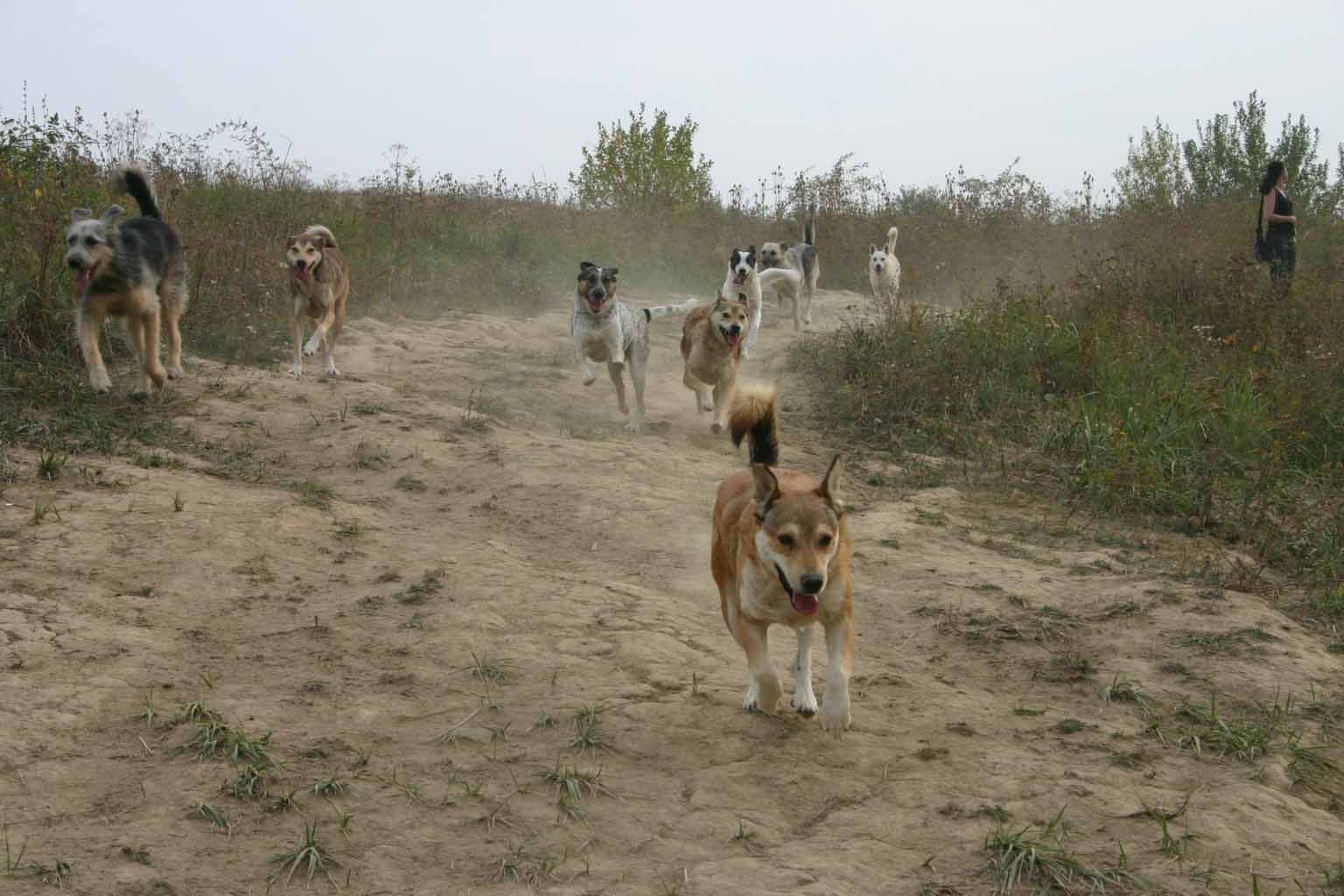

We therefore recommend placing such neutered and vaccinated dogs in an “open shelter” at least 2 km away from human habitation, main roads and livestock farms. Ideally an open shelter should be partly forest, or adjacent to forest, with natural shelter and water. One night guard and two day-time employees can easily care for 100 dogs or more. The dogs should have dog houses and be fenced in for 10-15 days to get used to their new home. Then gradually the portable fencing can be removed, and used elsewhere, so that the dogs live free. We have found that even shy, nervous dogs become approachable and therefore rehomable if they are housed in an open sanctuary. Viruses such as kennel cough, distemper and parvo do not occur in a natural, open environment. If the dogs are well-fed with a high protein and fat diet they do not suffer from cold and positively thrive in snow.
A variation on a totally open shelter is to fence the perimeter but to open gates during the day, whistling the dogs in at feeding time in the evening, then enclosing them at night only.
Our experience is that 99% of the dogs will voluntarily remain in the open shelter and that dog fights do not occur because the dogs develop a natural hierarchy, with the human guards and feeders as “top dogs”, and because weaker dogs cannot be cornered and can run away. Some dogs will eschew their dog houses and live in holes in the ground or under bushes, creating their own “home territory”. Others will seek human contact from the guards and from visitors.
Open shelters should be sprayed in early summer against ticks and fleas.
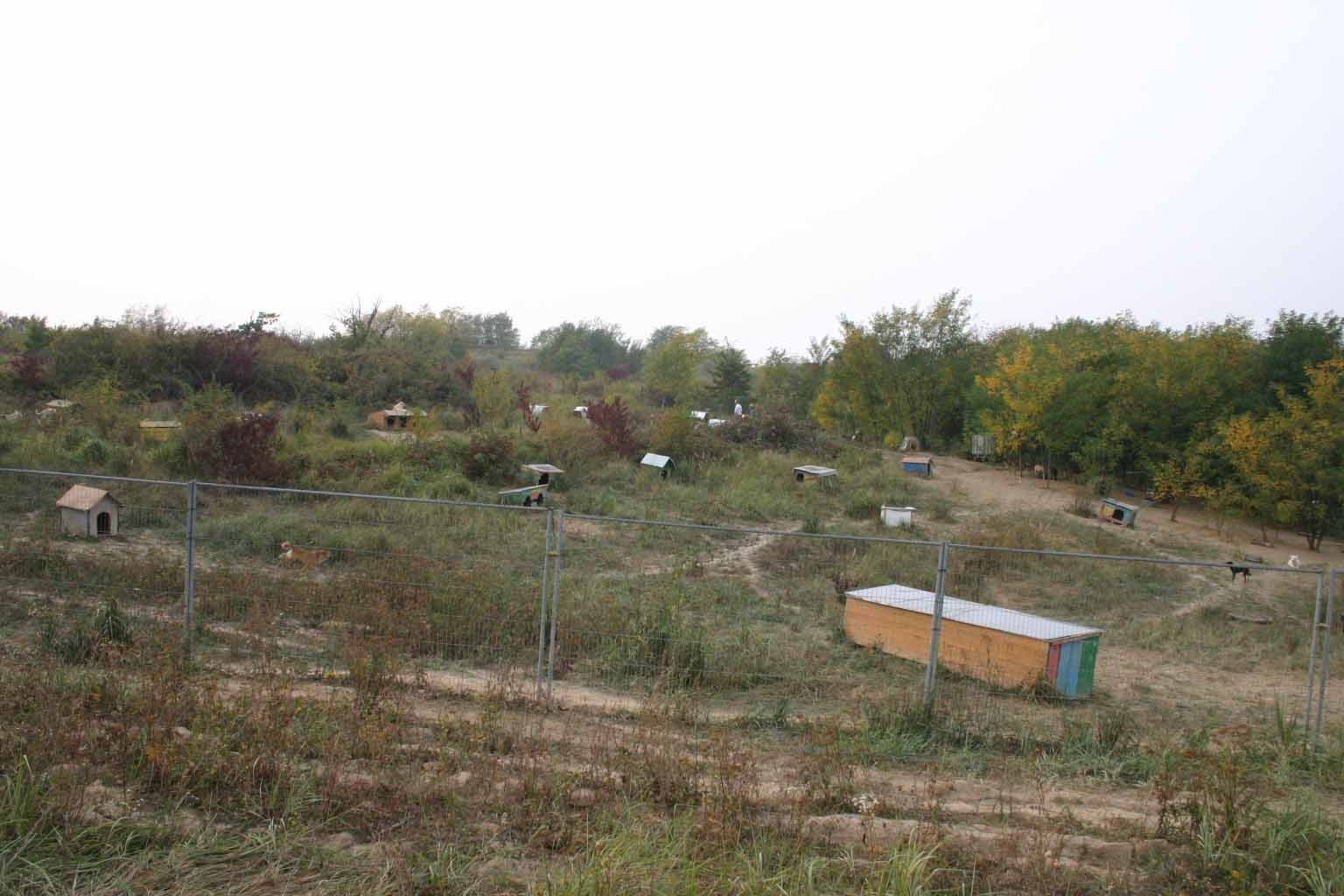
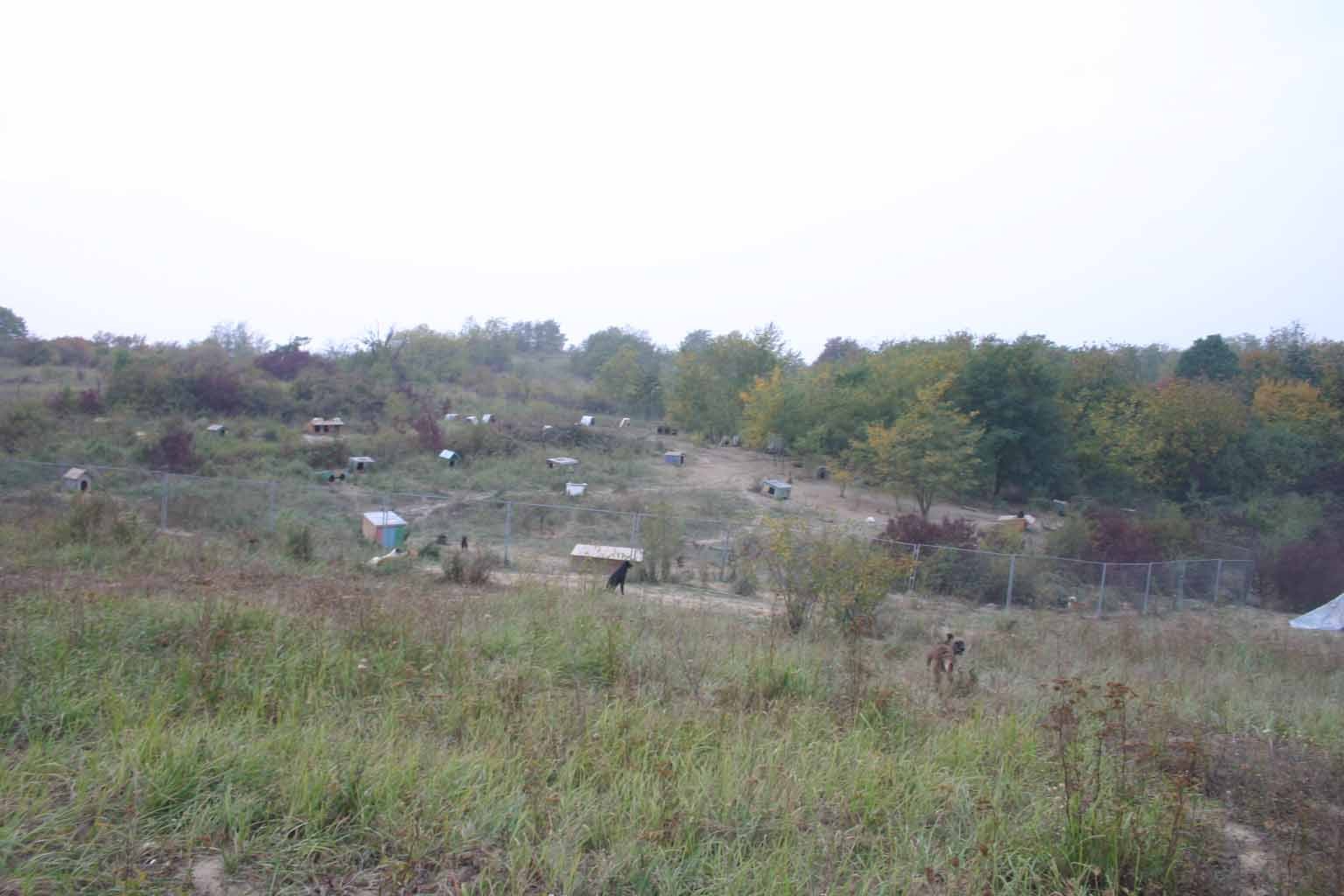
The cost of an open shelter is about one third of the cost of a traditional, enclosed prison-camp for dogs, because fewer personnel and no maintenance, cleaning or treatment of canine viruses are required. This is in our opinion the most humane way to accommodate large numbers of surplus dogs.
Open shelters should not be managed by municipalities because the municipality will be tempted to remove virtually all dogs from the streets to its open shelter, thereby sabotaging Neuter & Return and shooting itself in the foot.
The location of open shelters should not be publicised, otherwise they will become a magnet for dog dumping.
Dogs should be rehomed to the public from a small downtown rehoming centre, not from open shelters.
The removal of dogs from towns and cities to open shelters should be managed only by NGOs and must be a last resort – dogs should only go to open shelters as an alternative to euthanasia. ”
( Robert Smith )
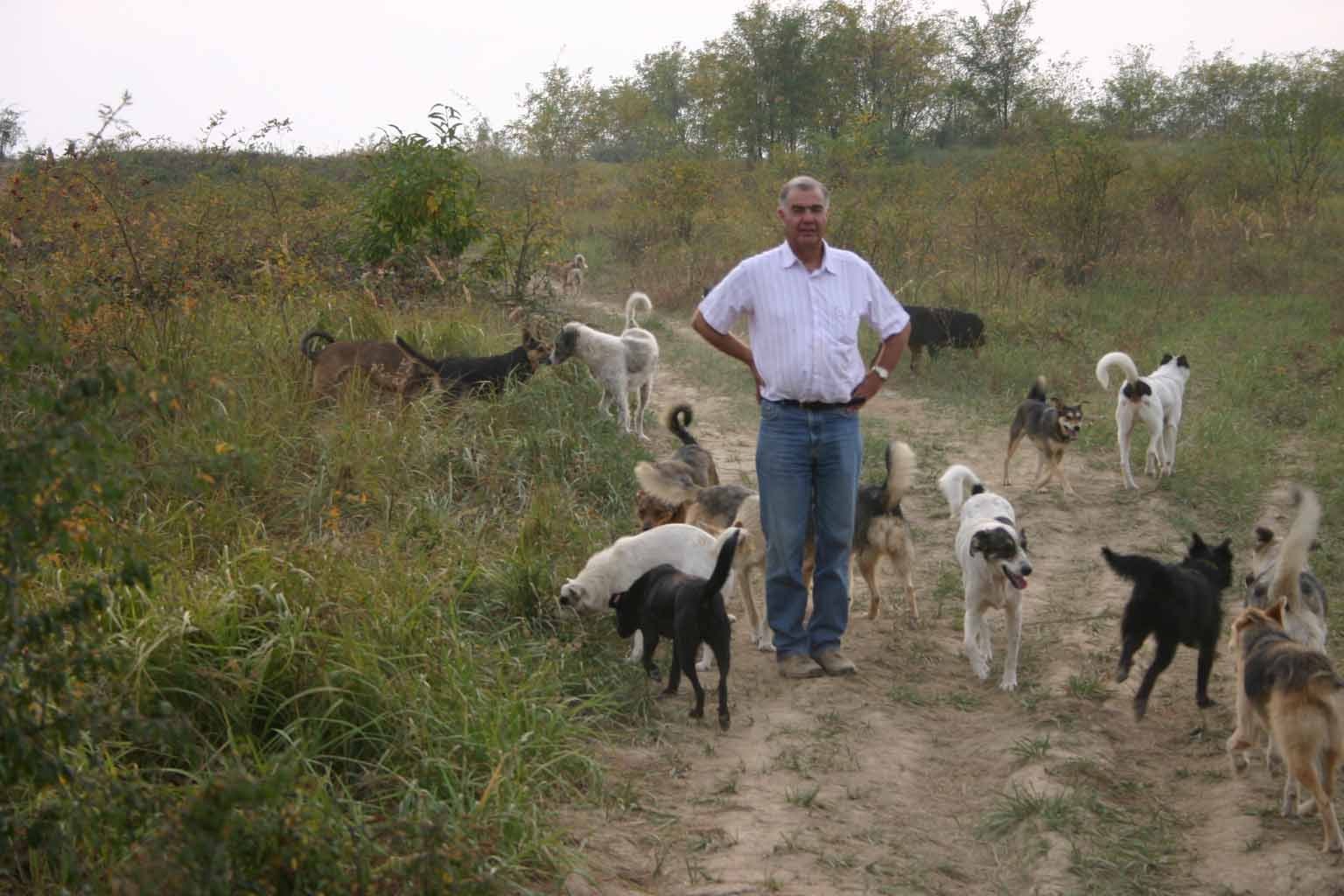
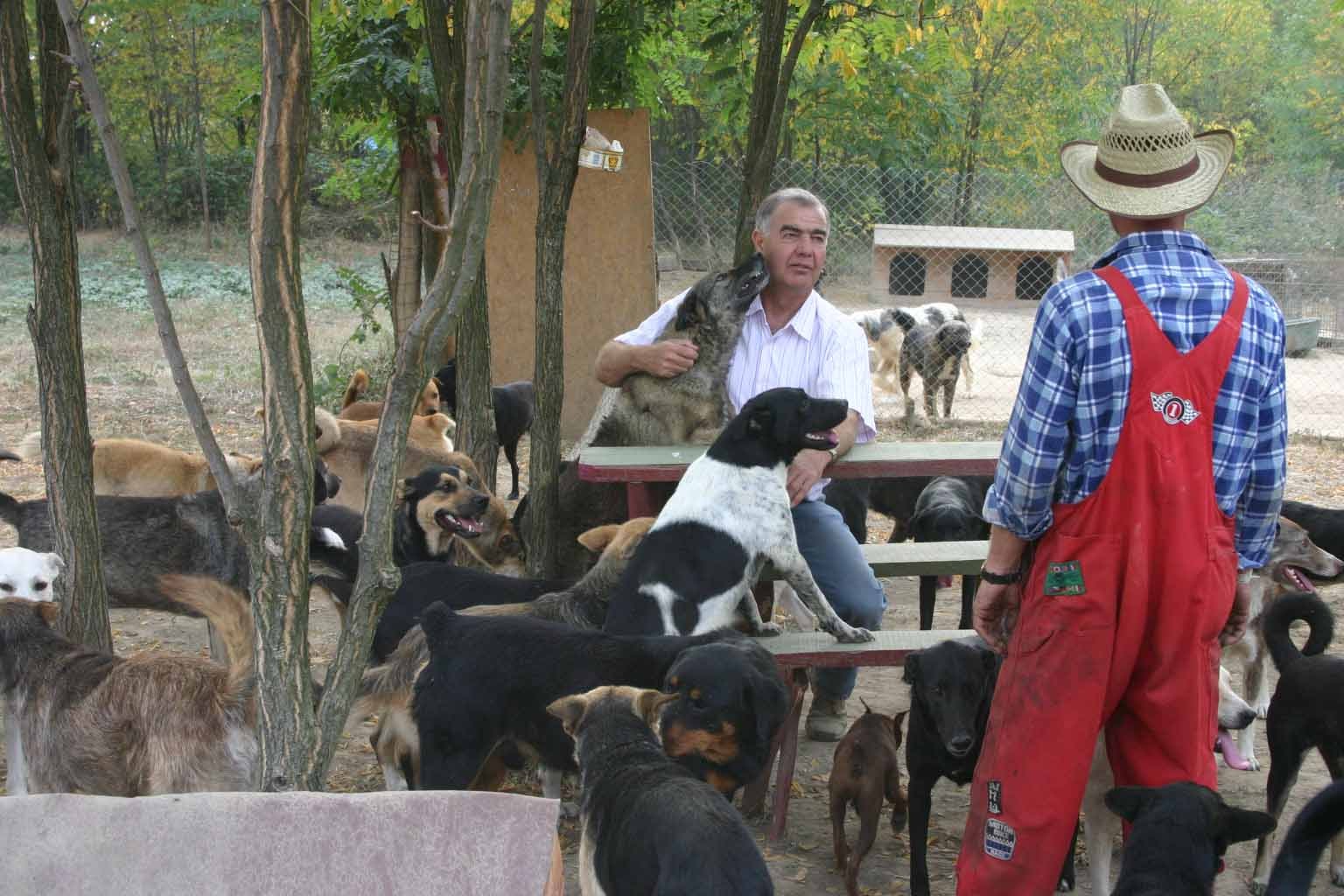
For more pictures, please, visit the Photo Gallery.
